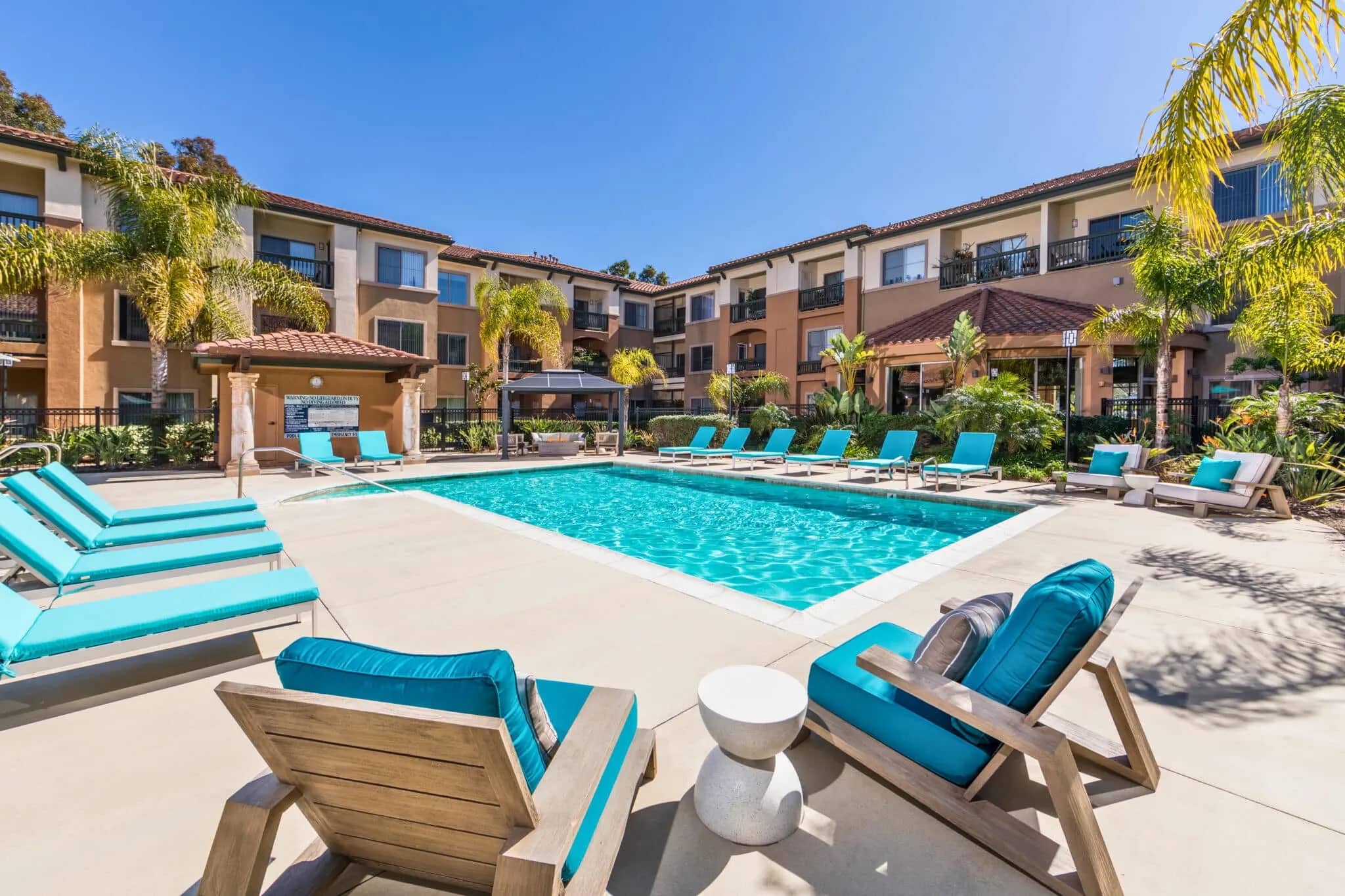Welcome to paradise! Retirees flock to Florida’s East Coast for its beachfront lifestyle, warm weather, culture, and affordability. This region of the Sunshine State sprawls for more than 1,000 miles along the Atlantic Ocean, dotted with idyllic beaches and vibrant cities. Some beaches are of soft, white sand so fine that it feels like walking on a cloud. Others are a golden hue reminiscent of the Florida sun that creates the state’s famous warmth.
St. Augustine, Vero Beach, West Palm Beach, Port St. Lucie, and Miami are among its cities bathed in sunshine and salt air. That collection of cities attracts a diverse population. You’ll encounter a blend of languages, cuisines, and cultures that make living there an enjoyable experience.
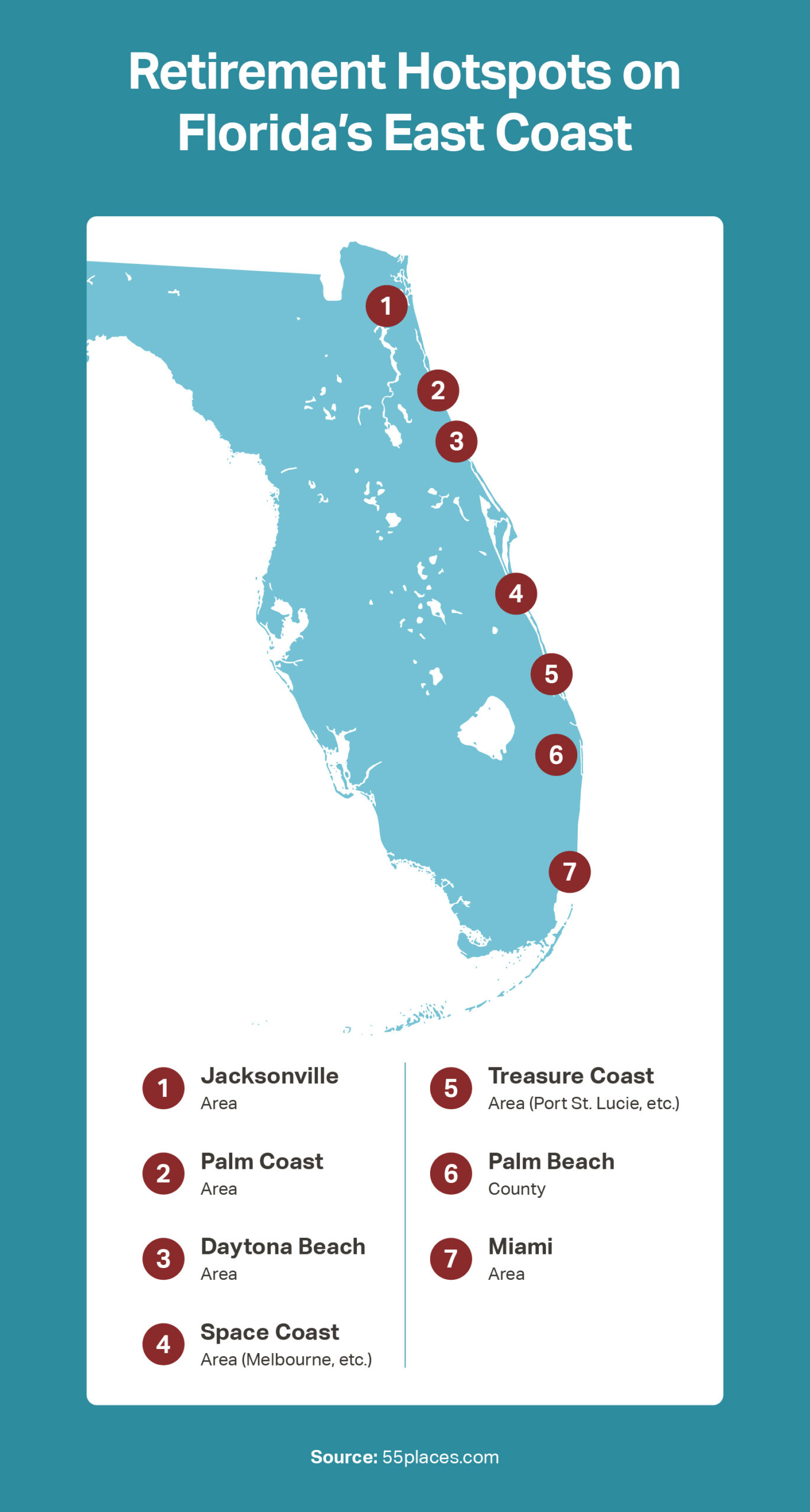
Despite its popularity as a retirement destination, the East Coast of Florida is surprisingly affordable, and you’ll find plenty of options that fit your budget. Additionally, the state is home to an array of 55+ communities that offer retirees the opportunity to live in a place that provides comfort, convenience, and a range of activities.
Whether you are a snowbird looking for a place to spend your winters or an active retiree looking for an engaging spot to settle down full-time, Florida’s East Coast beckons!
What It’s Like to Retire on Florida’s East Coast
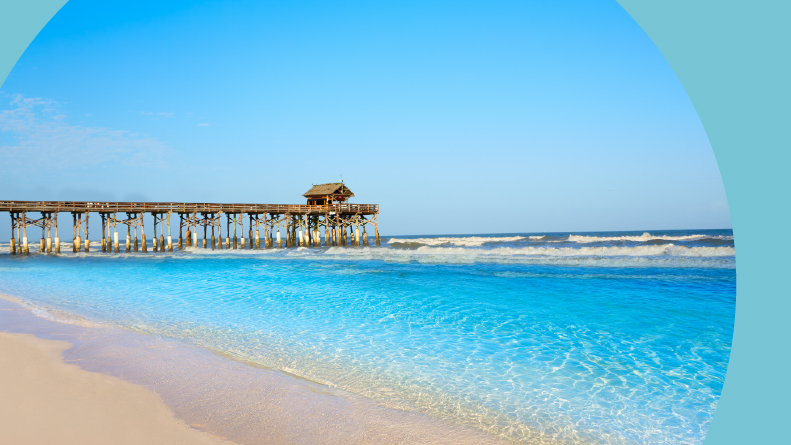
Life on Florida’s East Coast is defined by its proximity to the ocean, hot weather, and many options for cultural and outdoor recreation. Get to know the region, both its pros and cons, to help you picture your potential retirement.
The Coastal Lifestyle
Living on Florida’s East Coast means you are never far from a beautiful beach. Life here is made for getting sand between your toes, for going fishing, for sailing into the sunset, and breathing in refreshing, salty air.
On the East Coast, the Atlantic Ocean tends to be cooler than the waters of the Gulf Coast. The waves also tend to be bigger. If you live for watersports, the East Coast won’t disappoint. Even if you prefer less adventure on the water, you can find relaxing beaches to enjoy on the Atlantic side.
“Florida’s East Coast offers the best of both worlds for retirees. There are cities like Miami and West Palm Beach, alongside small towns like Vero Beach and St. Augustine. It’s a rare region where you can have plenty of amenities with a laid-back coastal lifestyle.”
Climate and Weather
Florida, for the most part, has a subtropical climate. The further south you go in the state, the more the climate shifts toward a tropical one. For life on the Atlantic Coast, that means hot and humid summers and mild winters. Those hot summer days and warm, sunny winters are a big part of what attracts so many people to Florida for their retirement years.
While everyone associated Florida with sunshine, and rightly so, it is also a very wet state. You can expect heavy rainfall and thunderstorms to hit throughout the year. But rain doesn’t have to change your plans for an entire day. It’s not uncommon to experience a short-lived, heavy downpour that gives way to more of that beloved Florida sunshine.
Hurricanes are another defining feature of Florida’s weather. Hurricane season runs from June through November, with the highest risk from August to October. If you live in Florida, on the East Coast, or anywhere in the state, you will need to be aware of the possibility of a hurricane and prepare appropriately.
While the entire state shares many climate and weather patterns, there are some regional differences. The southeastern portion of the state tends to be wetter, and the southeastern coastline is at higher risk for land-falling hurricanes.
Culture and Attractions
Life doesn’t begin and end at the beach on Florida’s East Coast. You’ll also find plenty to do onshore. If you gravitate toward the arts, West Palm Beach is the place to start. You can stroll its streets and explore local art galleries. If you’re feeling creative, you can take a class at Armory Art Center. Catch a Broadway show at the Kravis Center for Performing Arts or discover a fresh performance at Palm Beach Dramaworks.
On the northeastern stretch of the coast, you can lose yourself in the fascinating history of St. Augustine. Explore Castillo de San Marcos National Monument, a stone fortress built by the Spanish in the 1600s. Visit Fort Mose Historic State Park, the first free African settlement in the country. Take a walking tour to admire the city’s historical homes; some have even become bed and breakfasts.
For a rush of adrenaline, you can join the throngs of fans who flock to Daytona Beach for NASCAR events at Daytona International Speedway. Daytona Beach is also renowned for its vibrant nightlife, thanks to its numerous bars and music venues.
In a place with the warmth and natural beauty of Florida, you’ll also find plenty to do outside. Anywhere you go up and down the coast, you will find places to boat, surf, bike, golf, hike, and enjoy local flora and fauna.
Additional Resources
- The Best Places To Retire in Florida Without Hurricanes
- Weathering the Storm: Does an HOA Cover Hurricane Damage?
- The Most Affordable Places to Snowbird in Florida
- Fresh Alternatives to Florida for Retirement
Regional Pros and Cons
It’s a good idea to consider both the benefits and potential drawbacks of any area before deciding to settle there. On the sunny side, Florida’s East Coast is, well, sunny. You’ll enjoy beautiful weather throughout the year. Whether you’re relaxing at home or out and about, you’ll be surrounded by stunning views of the Atlantic Ocean. This area of Florida is also known for providing its residents with ample access to quality health care providers.
Just to let you know, these positive qualities are no secret. Many people are attracted to the East Coast of Florida. Parts of this area, particularly the southeastern part of the state, have a high population density. If you’re looking for more quiet and solitude in retirement, the crowds may be a con to consider.
Florida’s nickname as the Sunshine State is well-earned, but it’s also important to be mindful of the potential for hurricanes. By preparing ahead (such as creating a clear evacuation plan, staying informed during storm season, and factoring in insurance costs), you can feel confident and secure in your home. With the right precautions in place, you can enjoy Florida’s warm climate, beautiful beaches, and vibrant lifestyle year-round.
Additional Resources
- Best Places to Retire on the East Coast
- What Is the Retirement Age in Florida?
- Why Do People Retire in Florida?
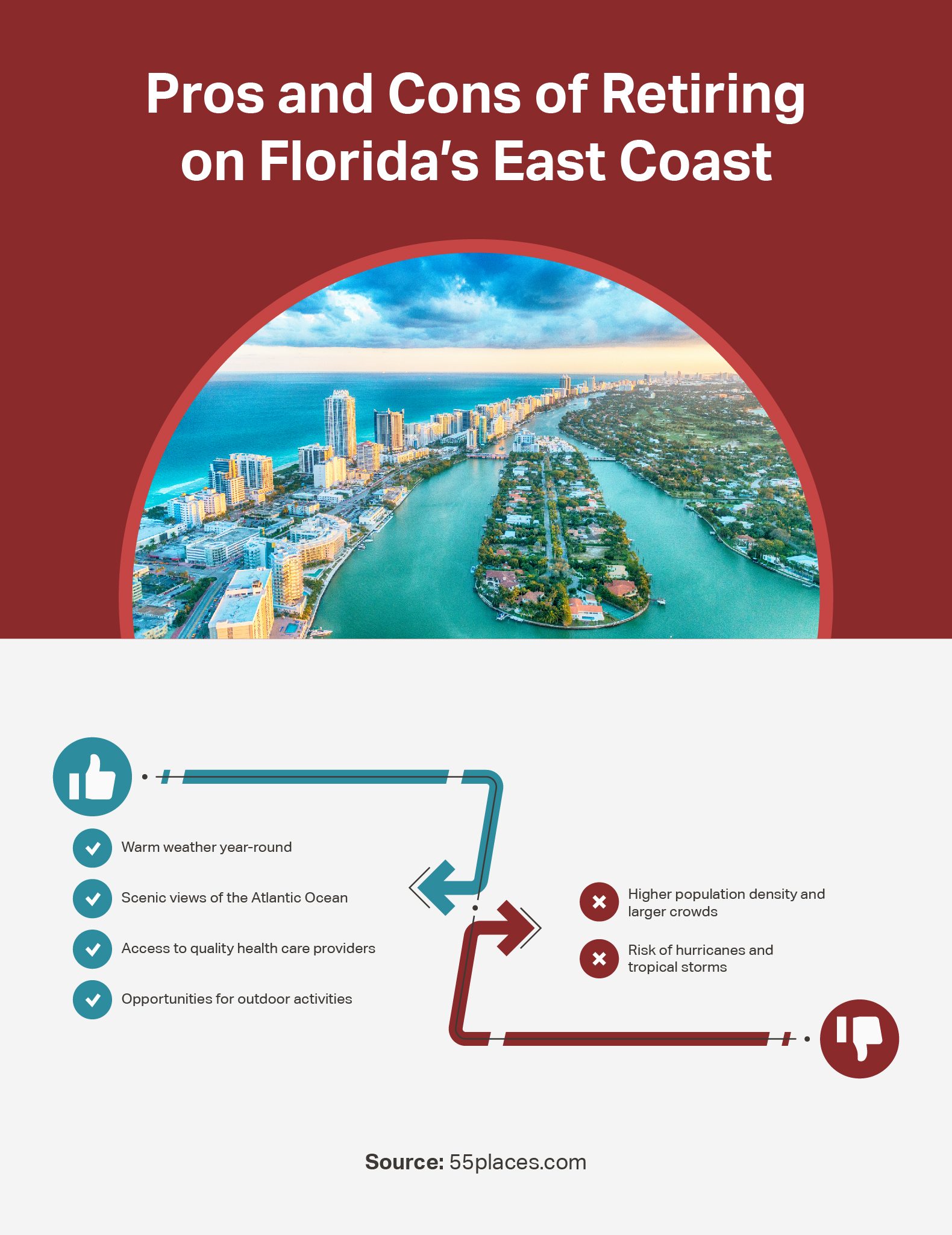
Best Places to Retire on the East Coast
The East Coast of Florida is a vast stretch with numerous potential places to settle down. These cities and areas are some of the standout retirement hotspots.
Jacksonville Area (Northeast Florida)
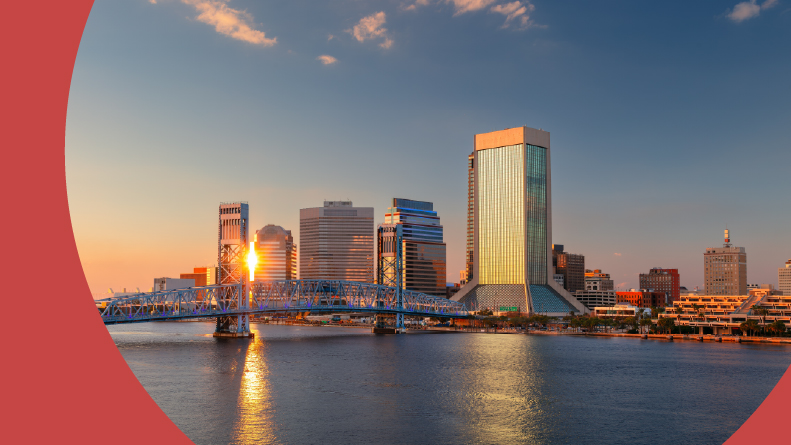
The Jacksonville area is one of the best places to retire in Florida on the East Coast, particularly if you’re prioritizing affordability. The Northeast part of Florida tends to have a lower cost of living compared to the South Florida metro areas, like Miami.
Jacksonville is located further north on the coast compared to many of the other popular Florida retirement cities along the Atlantic. You’ll still enjoy hot summers and mild winters, but you’ll have a higher chance of actually seeing a bit of snow when winter does arrive.
Easy Access to Health Care
For many people, access to health care is a high priority in their retirement years. If you live in this area, you have several options for primary and specialty care. The VA has a large presence in Jacksonville, where veterans account for a big chunk of the population. Veterans can access care at the Jacksonville 1 VA Clinic. In addition to the VA, University of Florida Health has many hospitals and clinics in the area. Mayo Clinic also has a location in Jacksonville.
Oceanside Living
While Jacksonville itself is not located directly on the ocean, the Northeastern part of Florida features numerous relaxed beach towns to enjoy. If you’re looking for a peaceful oceanfront experience, head to Neptune Beach. For a livelier beachfront experience, head to the bigger community of Atlantic Beach.
No matter where you are in the Jacksonville area, you’ll find plenty of ways to keep busy. Whether you are lounging on the beach or strolling the paths of the botanical gardens, you will be able to fill your time with whatever you enjoy most.
55+ Housing Options
When it comes to finding a home, the Jacksonville area offers a diverse range of options to consider. You might find a home in a 55+ community that offers a laid-back, resort-style of living, like Sweetwater by Del Webb. Alternatively, you can find a home in a more traditional city neighborhood or a suburb. If you’d like a more affordable waterfront view, you might find a condo overlooking St. Johns River in Jacksonville to be just the right fit.
Additional Resources
- Why You Should Retire in Jacksonville, Florida
- Jacksonville Area 55+ Communities With Indoor Pools
- Jacksonville 55+ Communities Near the Beach
- Jacksonville Area 55+ Communities With Condos for Sale
- Tampa vs. Jacksonville: Which Is Better for Your Retirement?
- Moving to Jacksonville? Here’s Everything Retirees Need to Know
- Jacksonville vs. Orlando: Which Is Better for Your Retirement?
- The Best Communities for Staying Active in Jacksonville, FL
- The Best 55+ Communities in Jacksonville for Downsizing
St. Augustine – Palm Coast Area
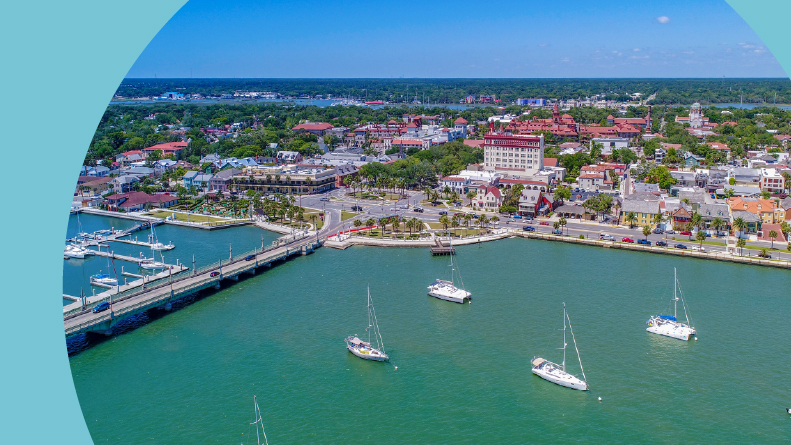
As you head south from Jacksonville, you’ll eventually hit St. Augustine and Palm Coast. These two coastal cities are known for their oceanfront charm and their more affordable cost of living. Given the area’s location further north, you’ll enjoy that summer heat and humidity, but winter temperatures can get much colder than the Southeastern part of the state.
Historic Charm
While seasonal changes are a part of living in this part of the state, its historic charm is something you can enjoy throughout the entire year. St. Augustine has well-worn brick streets that date back to the 1800s. The city is both picturesque and eminently walkable. You can get a taste of Palm Beach’s history and architecture in the Royal Poinciana Way Historic District.
Beachfront Living
Both cities offer the allure of beachfront living. Miles of beaches stretch along the coast of both cities, boasting warm sand and crystal clear waters.
If you never want to be far from the seashore, you can dive into the St. Augustine and Palm Coast area market for a beachfront condo. The area also has plenty of townhomes and 55+ communities ideal for retirees.
Additional Resources
Daytona Beach – Ormond Beach
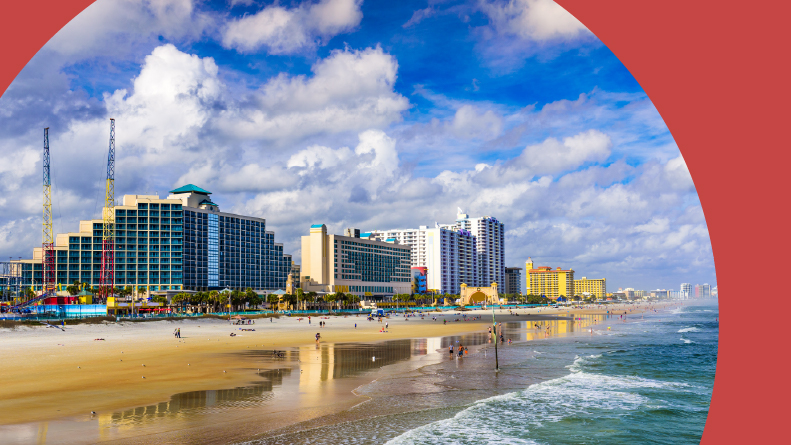
Daytona Beach and Ormond Beach both have a reputation as active Florida cities that attract families and a younger crowd. While that remains true, more retirees have been discovering their delights in recent years.
Nature and Urban Life
These two coastal cities have a welcoming blend of suburban serenity, urban excitement, and affordability. You can find quieter pockets in both cities, which could appeal to many people in their retirement years. Yet, you’re never far from some type of excitement. Daytona is perhaps most well-known for its association with NASCAR, particularly through the Daytona International Speedway. It also has a thriving collection of restaurants, a growing brewery scene, and a multitude of festivals throughout the year.
Ormond Beach is a walkable city that offers a connection to both nature and urban life. You can camp and birdwatch here, and you can still grab a great bite to eat out.
Spend Every Day By the Ocean
Like all of the other cities along the Atlantic Coast, the praises of the beaches in this area cannot be sung enough. Long, hot summers never feel long enough when you can spend every day by the ocean.
For budget-conscious individuals, there are communities of manufactured homes available in both Daytona Beach and Ormond Beach. Some of these communities are specifically designed for residents aged 55 and above. The active adult communities and condos in the area also offer a swath of affordable options.
Additional Resources
- Why You Should Retire in Daytona Beach
- Moving to Daytona Beach? Here’s Everything Retirees Need to Know
- 5 Things to Know About Latitude Margaritaville in Daytona Beach, FL
Space Coast (Melbourne – Cocoa Beach Area)
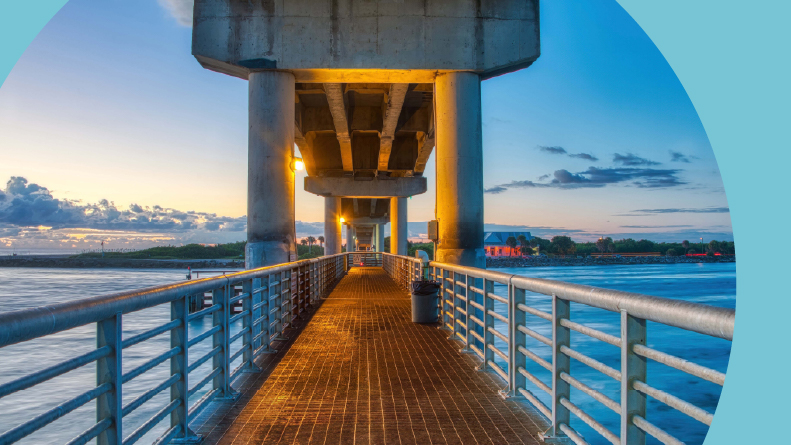
Florida’s Space Coast, located in about the middle of the state’s Atlantic side, is so named because of the Kennedy Space Center and Cape Canaveral Space Force Station. It’s a technology hotspot and a beachfront haven with a small-town vibe.
A Technology Hotspot
Melbourne and Cocoa Beach are two of the Space Coast’s most alluring cities. Cocoa Beach is even considered the gateway to the Kennedy Space Center. Here, you have a front row seat as humans continue to look to the stars and push the boundaries of space exploration. You can see the latest rocket launches at the Kennedy Space Center or catch a glimpse at a nearby beach.
The Space Coast has plenty happening on the ground, too. Melbourne is known for its museums and arts district. Cocoa Beach is well-known as a surf town. Both cities have picturesque piers ideal for watching the water and fishing.
Salt and Fresh Water
While all of Florida’s East Coast has access to the ocean, the Space Coast has some unique water features. Salt and fresh water collide in a series of lagoons, creating a unique habitat for a profusion of plant and animal life. The Indian River Lagoon is home to more than 4,000 different species. From June to October, the lagoons take on an otherworldly glow thanks to bioluminescence. You can kayak, sail, tube, and parasail in these beautiful waters.
Space Coast Housing Market
The housing market on the Space Coast is a mix of new construction and older homes, which means you’ll have a wide range of styles and price points to consider. The 55+ community scene is also growing in the region.
Additional Resources
Vero Beach – Port St. Lucie Area (Treasure Coast)
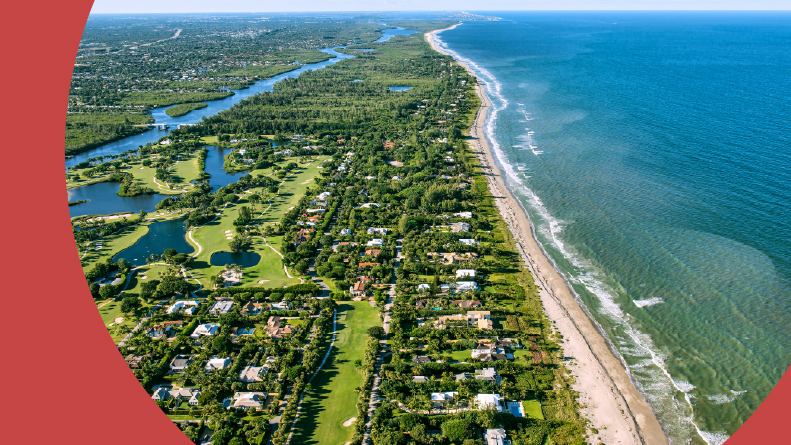
More than 3,000 years ago, a fleet of Spanish ships sank off the Atlantic Coast. Those ships were carrying loads of gold and precious jewels that were scattered to the ocean floor in the shipwreck. That legacy endures today. You might turn up an errant piece of treasure off Florida’s Treasure Coast today. People certainly make a hobby of searching, complete with metal detectors. Wreck diving is also popular.
The Treasure Coast includes Vero Beach and Port St. Lucie. The area offers the beachfront beauty you’d expect from Florida, along with an upscale feel and more affordability than other popular cities, such as Miami. Additionally, you have access to excellent health care; the Cleveland Clinic has a presence on the Treasure Coast.
Shopping, Dining, and Recreation Opportunities
If the emerald green of a good golf course is the treasure you seek, you’ll strike gold in the Vero Beach and Port St. Lucie area. The Treasure Coast is home to more than 70 courses, and the warm weather means you can play any time of year. Boating is another natural fit for leisure time on the Treasure Coast. Whether you own a boat or join a cruise, there are always ways to get out on the water for pleasure or adventure.
The Treasure Coast also has a lively culinary scene. Of course, you can enjoy fresh seafood on the water, and you’ll never grow tired of sampling the menus of the more than 100 locally owned restaurants. You can also hunt for treasure in the area’s multiple shopping districts. If you prefer big malls, you can lose yourself in Treasure Coast Square. If you want to shop local, Vero Beach has a collection of oceanfront boutiques.
Low-Maintenance Living Near the Beach
Real estate options on the Treasure Coast are quite diverse. You can find waterfront gems, or you can settle down in more inland communities. The Treasure Coast is also rich in 55+ developments, which offer low-maintenance living near the beach.
Additional Resources
- Is Vero Beach a Good Place to Retire?
- Moving to Port St. Lucie? Here’s Everything Retirees Need to Know
- The Best Lowest-Priced Communities in Port St. Lucie, FL
- Port St. Lucie Communities With Homes for Sale Under $200k
- The 55+ Market Is Booming in Port St. Lucie, FL
- Exploring the Treasure Coast: Top Things To Do for Active Adults
- Affordable 55+ Pet-Friendly Living: Explore Treasure Coast 55+ Communities With Dog Parks
- Treasure Coast Florida Homes for Sale: 55+ Communities With New Construction
- The Best Treasure Coast 55+ Communities Near the Beach
- Treasure Coast Communities With Homes for Sale Under $150k
West Palm Beach – Boynton Beach – Delray Beach
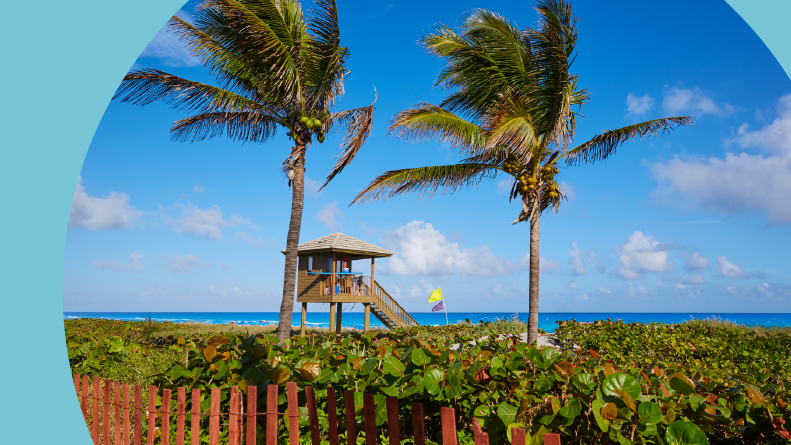
West Palm Beach, Boynton Beach, and Delray Beach comprise an urban stretch on the Southeastern coast of Florida. The area is defined by its embrace of arts and culture. You can wander through multiple different arts districts. You can try any number of restaurants and settle on your new favorite. These three cities have a decidedly upscale vibe yet offer pockets of affordability.
Also, like all of Florida’s East Coast, this section has its beautiful beaches. Sun yourself on the pristine sands of the shore, swim in the tropical waters or get out on a boat for spectacular fishing and views.
West Palm Beach
If you want to find yourself at the heart of what is happening in West Palm Beach, head to the Clematis Street Entertainment District. The district is always alive with people looking to eat out, shop, and enjoy life day and night. You can even navigate the area with a free trolley.
Boynton Beach
Though urban, Boynton Beach has a deep connection to nature. The Green Cay Nature Center includes 100 acres of wetlands. You can enjoy the open space with the help of an elevated boardwalk. The city’s multiple parks also offer opportunities to revel in natural beauty both on land and in the water.
Delray Beach
For a taste of Delray Beach’s charms, you can wander the Pineapple Grove Arts District. This section of the city features eclectic art galleries, local boutiques, delicious eateries, and spas for when you need to unwind. The city’s Atlantic Avenue is another magnet for residents and visitors craving access to restaurants, shops, and nightlife.
Luxury 55+ Living
High-end development is characteristic of this strip of Florida’s East Coast. You can settle down in a luxury condo or villa. The 55+ communities in the area are plentiful and tend toward a more upscale ambiance. The area also has plenty of mid-range options to explore.
Additional Resources
- West Palm Beach 55+ Communities With Golf Courses
- West Palm Beach 55+ Communities With Condos for Sale
- Palm Beach vs. West Palm Beach: Which Is Better for Your Retirement?
- 7 Popular Gated 55+ Communities in Boynton Beach, FL
- Boynton Beach Communities With Homes Under $200k
- Is Delray Beach a Good Place To Retire?
- 55+ Communities With Homes for Sale Under $150K in Delray Beach, Florida
Miami – Coral Gables – Aventura Area
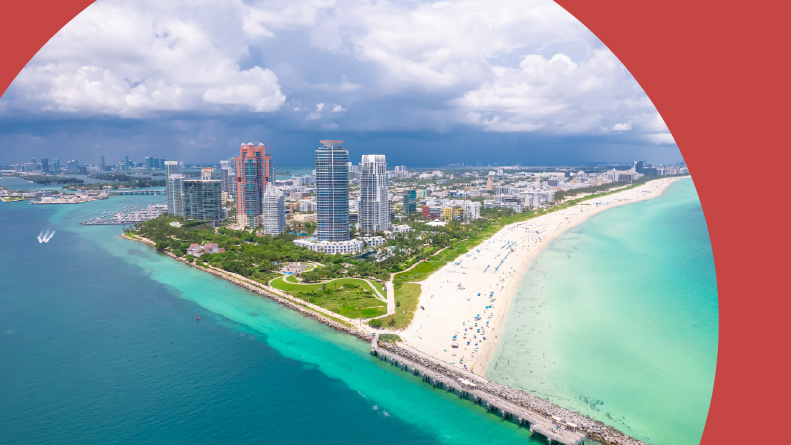
Miami is synonymous with Florida’s nightlife. Its neon-soaked atmosphere and thriving club scene make it a destination for residents and tourists who love the life of the party. On the other hand, Coral Gables and Aventura offer a more sedate, suburban style. In this coastal area, you can choose to be at the heart of urban activity or in a more relaxed enclave, but either way you have access to world-class medical care, rich cultural diversity, and an exciting entertainment scene.
You can probably picture Miami’s skyline. Its high-rise condos against a backdrop of blue sky are a part of Florida’s identity. Of course, there are other real estate options in the area, including luxury 55+ communities. As you move away from the dense city center of Miami, in areas like Aventura and Kendall, you’ll find more communities that cater to active adults.
Miami
In Miami, you’ll find yourself surrounded by the city’s famous, colorful Art Deco architecture, particularly in the South Beach neighborhood. Immerse yourself in the city’s never-ending nightlife. By day, soak in the sun and the culture. If you feel like stepping away from the buzz and bustle of the city, Everglades National Park is only an hour’s drive away.
Coral Gables
In Coral Gables, you will find numerous places to eat, shop, and enjoy the nightlife. However, it tends to be more peaceful. It’s more family-friendly and is located just south of Miami, sharing many similarities with the latter, but with less emphasis on nightlife.
Aventura
Aventura is a suburban city on Florida’s East Coast. You’ll find more residential space than the dense urban environment of Miami, but it still has options for entertainment. The Aventura Mall, for one, is a highlight for shopping and dining out.
Additional Resources
- Gated 55+ Communities in Miami-Dade County
- Is Miami a Good Place to Live?
- Moving to Miami? Here’s Everything Retirees Need to Know
- Orlando vs. Miami: Which Is Better for Your Retirement?
- Tampa vs. Miami: Which Is Better For Your Retirement?
Additional Florida East Coast Resources
- Retiring on Florida’s Gulf Coast: Best Places, Costs, and 55+ Living (2025)
- Where to Retire on Florida’s Gulf Coast: Southwest vs. Northwest Florida
- Coastal Retirement Bliss: 10 Reasons to Buy a Home on Florida’s Central Gulf Coast
- South Carolina vs Florida: Which Is Better for Retirement?
- Georgia vs Florida: Which Is Better for Retirement?
- Is It Better to Retire to Florida or North Carolina?
- Best Beach Retirement Towns in Florida: Find Your Ideal Spot
- Is It Better to Retire on the East or West Coast of Florida?
- Arizona vs. Florida: Which Retirement Destination Is Right for You?
Housing on the East Coast: Options, Costs, and Communities
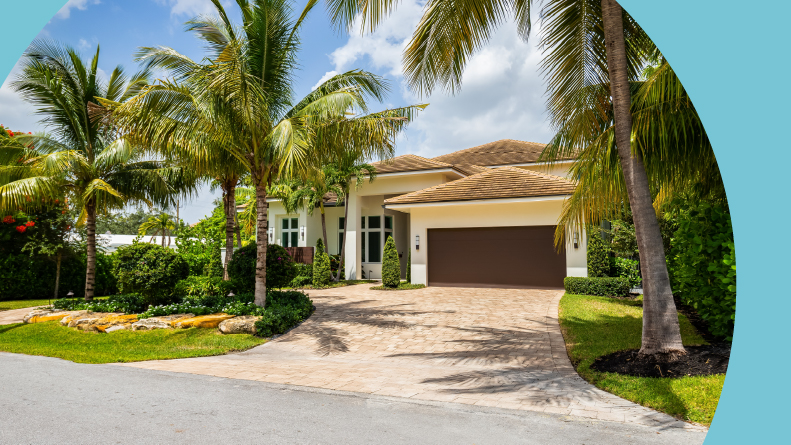
55+ and Active Adult Communities
Retirees are drawn to Florida, and there is a significant presence of 55+ and active adult communities to accommodate them. These communities each have distinct character, but you expect to find excellent amenities at each.
If you’re concerned about privacy and security in your retirement years, you may gravitate toward one of the East Coast’s gated 55+ communities. Active adults are often delighted to discover that these communities are designed to cater to a wide variety of hobbies and social connections. Community clubhouses often feature fitness centers, pools, and activity rooms. Plus, the HOAs at these communities work to make life as low-maintenance as possible for residents.
Whatever type of home you are picturing for your golden years, you’ll be able to find it in one of the active adult communities on Florida’s East Coast. The 55+ developments feature a mix of single-family homes, villas, condos, manufactured homes, and a blend of these home types. That wide variety gives you plenty of flexibility when it comes to the size and price you’re looking for.
“Despite its popularity, the East Coast of Florida still offers surprising affordability. Many 55+ communities provide for every budget, from luxury condos overlooking the ocean to more modest homes just a short drive from the beach.”
-Khadeejah Johnson, Associate Vice President of Brokerage & Partnerships at 55places.com
These communities also offer you the flexibility to embrace the kind of lifestyle you want. If you envision yourself enjoying peace and quiet, consider selecting a private community that prioritizes green spaces and solitude. If you are looking for social connections, you’ll find communities that organize clubs and outings for nearly every sport, hobby, and taste imaginable.
While there are 55+ communities located up and down the East Coast, there are more concentrated clusters in certain areas. Further north, you’ll find a plethora of active adult communities in the Jacksonville area, as well as the Daytona Beach and Ormond Beach area. As you head further down, the Space Coast and Treasure Coast offer up plenty of options. The West Palm Beach-Boynton Beach-Delray Beach and Miami-Coral Gables-Aventura areas in the Southeast also feature a cluster of beautiful, upscale 55+ communities.
Additional Resources
Beachfront and Waterfront Living
Beachfront and waterfront living have a massive appeal. You can feel sand between your toes anytime you want. You can soak up the sun and take in the beautiful views. Many active adults are drawn to the boating lifestyle, which is easily supported by the proximity to the water and access to docks.
But it’s also important to contend with all of the realities that come with waterfront living. Coastal living tends to come at a premium price. There are certainly more affordable areas along the East Coast, but the closer you are to the water and the newer the development, the more you can typically expect to pay.
Ocean views also come with the ongoing risks of erosion and hurricanes. If you decide to retire here, you’ll need to consider your property and personal safety.
Additional Resources
New Construction vs. Resale
The market for 55+ communities in Florida is thriving. It has both well-established communities that have been around for decades. For example, construction on Halifax Plantation in Ormond Beach dates back to 1980. Florida’s East Coast is also alive with new developments. The PGA Village Verano in Port St. Lucie and the Regency at Avenir in Palm Beach Gardens are still undergoing construction.
When considering new construction or resale, there are upsides and downsides to both. If you’re curious about new construction, you could be swayed by energy-efficient building, modern layouts, and the option to customize. You may also find that developers will offer incentives on closing costs and upgrades.
If you are leaning toward new construction, you should be aware that the price is likely to be higher. You may also face a longer timeline for completion. With space at a premium in Florida, newer construction may be located in less developed areas.
Resale homes have the benefit of more affordable pricing. Plus, these homes are in communities that have had time to put down roots, literally and figuratively. Older communities will have more established social and hobby groups, as well as more mature landscaping.
On the other hand, you may find yourself in a very competitive market for resale homes. Additionally, older homes may need more updates than brand-new developments.
Additional Resources
Home Prices and Rents by Area
Florida is one of the premier destinations for snowbirds and retirees. Unsurprisingly, that can mean rent and home prices come at a premium in many areas of the state. But that’s not to say the East Coast of Florida is unaffordable. The cost of renting and buying can vary substantially, influenced by factors like community type, proximity to the water, amenities, and age of construction.
The typical rental season runs from October through April, when snowbirds flock to the Atlantic Coast to escape the chill of winter. Given that trend, there are plenty of rental property options. You can lease a home in a 55+ community, or you can look for condos, apartments, and short-term vacation rentals in the metro areas of the East Coast. The average rent in Florida is $1,989, according to RentCafe. For Florida’s East Coast, rent in Miami averages at $2,720, West Palm Beach averages at $2,371, St. Augustine is $1,887, and Port St. Lucie is $2,133.
If you’re looking to buy rather than rent, you can expect prices to vary depending on the area. The median list price in the Central Atlantic Coast area is $391,000, according to 55places.com data. The median list price in the Daytona Beach area is $432,450, and $425,000 in the Jacksonville area.
Additional Resources
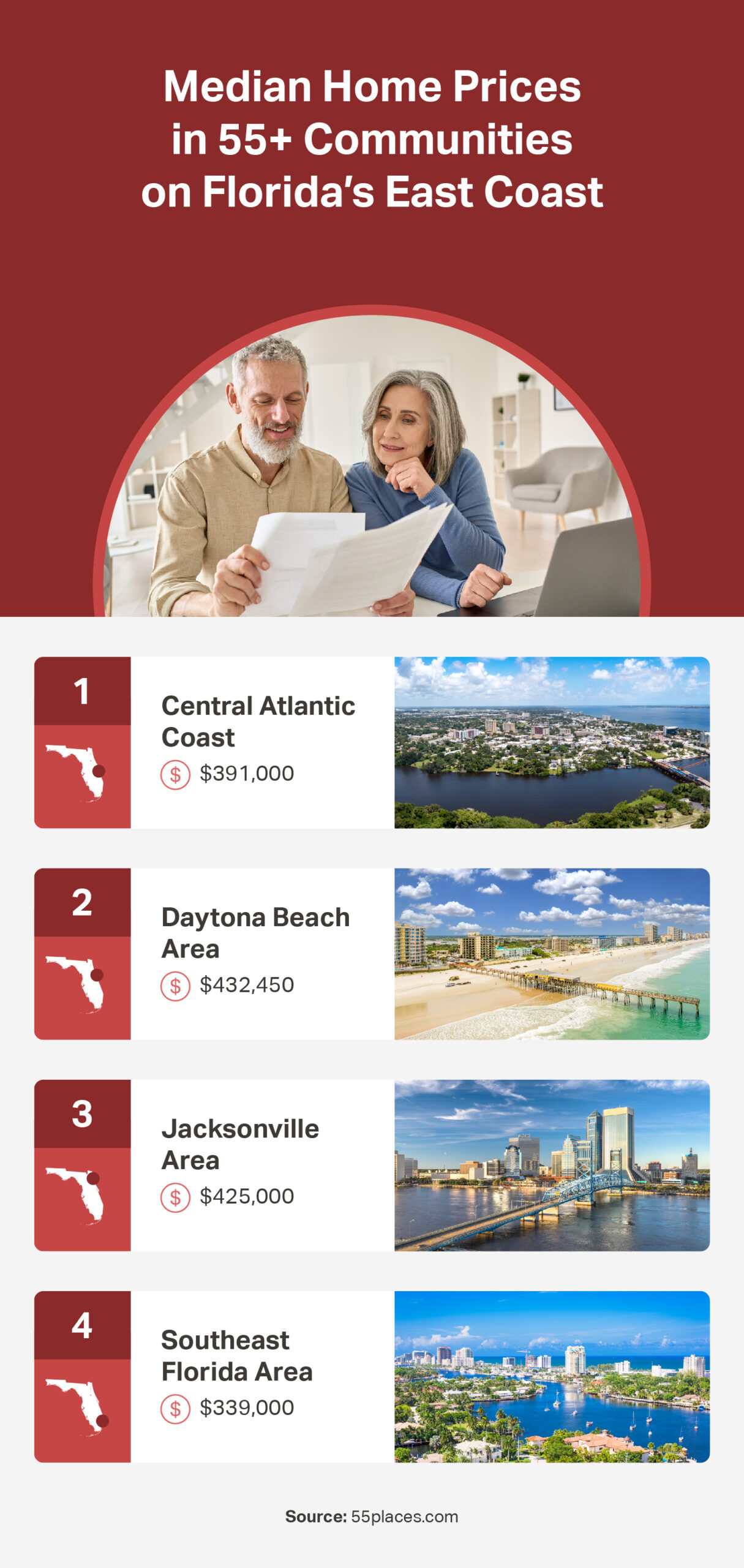
HOAs, Flood Zones, and Insurance Considerations
If you are coming from out of state, you may not be familiar with some of the costs associated with settling in Florida. Hurricanes and flooding are a part of living in Florida, and residents need to prepare accordingly. That means doing your research on building elevation requirements, flood zones, insurance, and hurricane preparation.
If you are considering a new development, be sure to discuss any elevation requirements with the builder and how they will impact the final cost. You will also, of course, need homeowners’ insurance. Standard policies will cover wind damage caused by hurricanes, but flooding is a different story. Check your home’s flood zone risk level. This will determine how much flood insurance coverage you need, which will be a policy in addition to your homeowners’ insurance.
Additional Resources
- Benefits of an HOA: Why 55+ Homebuyers Want a Homeowners’ Association
- Buying a Home With or Without an HOA
- Everything You Need to Know About a 55+ Community HOA
- Homeowners Insurance for Seniors: A Comprehensive Guide
- Understanding Florida Homeowners Insurance: What to Expect and How to Prepare
Cost of Living, Health Care, and Local Services
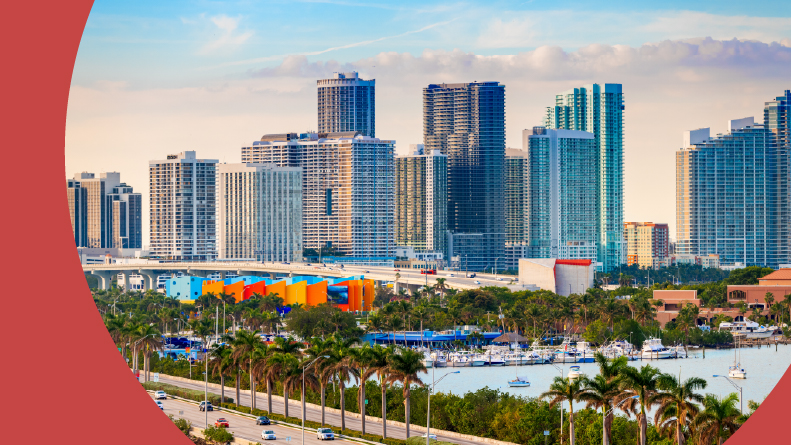
Cost of Living Comparison
St. Augustine-Palm Coast Area
The overall cost of living on Florida’s Palm Coast is 6% lower than the national average, according to Payscale. Groceries are also less expensive; you’ll spend 2% less than the national average. But the cost of utilities is 20% higher than the national average; the average energy bill is $248.67 a month, according to Payscale data. Transportation costs, like gas and bus fare, are just 1% more expensive than the national average.
Daytona Beach-Ormond Beach
Daytona Beach prices are close to what you’d see on a national level. The overall cost of living is 1% lower than the national average, while utilities, transportation, and groceries are slightly more expensive, according to Payscale. You can expect similar prices in Ormond Beach.
Space Coast
Life on Florida’s Space Coast, the Melbourne-Cocoa Beach Area, is on the more expensive side when it comes to housing. But the overall cost of living, taking into account expenses like groceries, utilities, and transportation, is less expensive than what you’d encounter in the U.S. and Florida as a whole, according to BestPlaces.
Treasure Coast
Florida’s Treasure Coast is further south along the coast, and housing prices are higher in the Vero Beach-Port St. Lucie area compared to the national average. But the overall cost of living in the two cities is still less expensive than the national average, according to BestPlaces. Living in Port St. Lucie tends to be slightly pricier than in Vero Beach.
West Palm Beach-Boynton Beach-Delray Beach
As you head further south along the Atlantic Coast of Florida, the cost of living tends to become more expensive. The cost of living in the West Palm Beach-Boynton Beach-Delray Beach area is 14.1% higher than the national average, according to BestPlaces. Things like housing, food, utilities, and transportation are going to be pricier here.
Miami-Coral Gables-Aventura Area
The Miami area, including nearby cities Coral Gables and Aventura, is the most expensive place to live on Florida’s East Coast. As a highly desirable metro area, it naturally comes with a higher price for housing and other necessities. The overall cost of living in this area is 18.9% higher than the national average, according to BestPlaces.
Additional Resources
- How Much Does It Cost To Retire in Florida in 2025?
- Understanding Florida Homeowners Insurance: Where to Expect and How to Prepare
- Can I Retire in Florida on $3,000 a Month?
- How Long Will $1 Million Last in Retirement in Florida?
- Social Security Changes for Florida Retirees in 2025
- Best Places To Retire in Florida on a Budget
- Luxury Retirement Communities Florida
- 55+ Communities in Florida Under $100,000 With Homes for Sale
- Best Lowest-Priced Communities in Florida (With Low HOA Fees)
Health Care Access
Access to health care is essential for people in their retirement years. Knowing that a quality provider you can trust is nearby can be a significant factor in deciding where to retire. The metro areas on the East Coast have numerous options to serve their populations.
Several major hospital systems have locations along the Atlantic Coast. Cleveland Clinic has a significant presence on the East Coast of Florida, particularly on the Treasure Coast. Mayo Clinic, another nationally recognized health system, has a hospital in Jacksonville. Baptist Health and AdventHealth are also major healthcare systems with hospital and clinic locations throughout the East Coast.
With many people settling in Florida during their golden years, numerous health care providers in the state offer specialized care for seniors and veterans.
Additional Resources
- 55+ Communities Near the Best Hospitals in Florida for Seniors
- The Best Places to Retire for Health Care
- How Do 55+ Communities Handle Health Care and Emergency Services?
Taxes
Life in Florida comes with some tax advantages, another reason it is so popular with the retirement crowd. For starters, the Sunshine State does not have a state income tax.
If you become a full-time resident of Florida, you could also benefit from the state’s homestead exemption, which could be as much as $50,000. If you have a home with an assessed value of $100,000, for example, you would not have to pay any property taxes on the first $25,000 of home value. A second $25,000 chunk of value would be exempt from non-school taxes, and the remaining $50,000 of value would be taxable.
Florida also places a cap on home assessment value via Save Our Homes. The year after you receive a homestead exemption, your home’s assessed value cannot increase higher than 3% or more than the Consumer Price Index, whichever of those numbers is lower, according to the Florida Department of Revenue. If you move from one homestead in Florida to another, you may be able to carry this benefit with you.
You will, of course, have to pay some property taxes in Florida. If you’re looking for savings, property taxes in Indian River County and Brevard County are lower than the national median.
Additional Resources
Is East Coast Retirement Right For You?

The East Coast of Florida has a lot of attributes that appeal to retirees, but only you can decide if it is right for you. If you love going to the beach, that will certainly boost the Atlantic Coast in your estimation. No matter what East Coast city you end up falling in love with, you will always be close to the sand and surf. You can spend your days lounging on the beach or diving into water sports.
“There isn’t just one ‘Florida retirement.’ The East Coast gives you choices. Quiet stretches of coastline in the north, metro living in the southeast, and everything in between. The key is finding what matches your vision for retirement.”
-Bill Ness, Chief Executive Officer, Founder, & Illinois Managing Broker at 55places.com
With the freedom that retirement affords, many people want to fill their time with arts and culture. What better way to spend your time than discovering, and perhaps even making, art? The East Coast of Florida is home to several cities, which offer up plenty of urban delights. You can go to the opera or the ballet, see art famous around the world and new art created by fresh visionaries, wander the halls of museums, and try food from a culture you’ve never experienced before.
While retirement is about joy, it also comes with more pragmatic concerns. If you are thinking about access to health care in your search, you can rest easy on Florida’s East Coast. Its major cities offer readily available hospitals and clinics to manage basic and specialty needs.
Reasons a Retirement on Florida’s East Coast Is NOT for You
What if you are picturing solitude and quiet in your retirement years? The East Coast of Florida may not be your ideal fit. Its cities are densely populated with full-time residents. Plus, its beaches and attractions draw boatloads, figuratively and literally, of tourists to its shores. Parts of the Northeastern coastline may be calmer, but the further south you go, the more people and activity you are likely to encounter. You likely won’t have to work as hard to carve out peace and quiet in other retirement destinations.
The weather is another big pro or con, depending on how you look at it. If you can’t imagine stepping outside in the sweltering heat and humidity of summer, you might consider somewhere cooler or somewhere with the promise of dry heat. You’ll also have to contend with the reality of hurricanes. Do the heat, sunshine, and ocean offset the downside of potentially destructive weather? There are other retirement destinations that have many of the same qualities without that risk.
The Atlantic Ocean for all its charms may sway your opinion of the East Coast. If you’re picturing calm, warm waters, you may find yourself more interested in the Gulf Coast of Florida.
Find the Florida Retirement That’s Best for You
It can be difficult to decide if anywhere new, Florida’s East Coast or not, is right for your years in retirement. You can do your homework before making any big decisions. Get a feel for Florida’s East Coast by making a visit or two. While you might fall in love with the area during a calm, relaxing beach vacation, you might have second thoughts if you experience more turbulent weather.
It can also be helpful to get a sense of the different regions along the coast. Do you like the more intense heat and activity of Southeastern Florida? Or do you prefer the chance to experience chillier winters and a quieter lifestyle further north along the Atlantic coast? Allowing yourself the freedom to experience different areas and different communities within those areas can help you arrive at a decision that works best for you.
FAQs About Retiring on Florida’s East Coast
1. What’s the difference between Florida’s East Coast and Gulf Coast?
The East Coast and Gulf Coast of Florida are different in a number of ways. The water on the Gulf side tends to be warmer and calmer. You’ll get more waves and cooler temperatures on the Atlantic side. The East Coast tends to be more crowded and have a higher cost of living compared to the Gulf Coast.
2. Is Florida’s East Coast more expensive than the Gulf Coast?
The cost of living in Florida’s East Coast cities tends to be higher than on the Gulf Coast. You’ll likely need to budget more for Insurance, housing, and other necessities if you opt for an East Coast retirement. But there are still plenty of 55+ communities that offer affordable living on the Atlantic side.
3. Which towns on Florida’s East Coast are best for retirees?
Active adults can find plenty to love in Florida’s East Coast cities. If you’re looking for water sports and more day-to-day excitement, you might be drawn to Daytona Beach. If you’re looking for the calmer, quieter side of the Atlantic Coast, you may like the atmosphere of Vero Beach. For the golfer looking to stay out on the course in retirement, Port St. Lucie’s collection of courses might be the perfect fit.
4. How’s the weather on Florida’s Atlantic side?
The weather on the East Coast of Florida is subtropical: hot and wet. You might experience a bit more volatility in weather patterns here than on the Gulf Coast. The Atlantic side is more prone to heavy rains and storms.
5. Are there oceanfront 55+ communities on Florida’s East Coast?
Absolutely. Many 55+ communities on Florida’s East Coast are settled on prime ocean-front realty. Latitude Margaritaville in Daytona Beach, for one, has a shuttle that takes residents to a private beachfront club.
6. Is beach erosion a concern on Florida’s East Coast?
Storms and rising sea levels are a reality of living in Florida. Beach erosion is an ongoing concern on the Atlantic Coast. There are ongoing efforts to bolster natural infrastructure to combat erosion, but it’s important to consider the risks to your property if you decide to settle here.
7. How accessible is health care on Florida’s East Coast?
Florida’s East Coast is densely populated, which means there are many options for quality health care services in its urban and suburban areas.
8. What’s the vibe in Southeast Florida vs. Northeast Florida?
Southeast Florida is more tropical than Northeast Florida, and it tends to be more crowded. Expect hotter and wetter temperatures. You can also expect more people, tourists, and residents in the Southeast stretch of the Atlantic coast.
9. Do I need flood or hurricane insurance?
Given Florida’s known risk of hurricanes and other tropical storms, flood, and hurricane insurance is a worthwhile investment to make while living anywhere along the coast.
10. Can I find budget-friendly retirement areas on Florida’s East Coast?
While Florida’s East Coast tends to be more expensive than the Gulf Coast in general, that doesn’t mean you can’t find budget-friendly retirement areas on the Atlantic. Many 55+ communities offer a variety of home prices and sizes to meet a wide variety of budgetary needs.
Find Your Ideal Florida 55+ Lifestyle
From golden beaches and year-round sunshine to vibrant cultural scenes and top-tier health care, Florida’s East Coast truly delivers a retirement experience like no other. Whether you dream of quiet coastal living, an active social calendar, or a blend of both, you’ll find communities here designed to fit every pace and passion. With attractive tax advantages, a wide range of price points, and amenities that make every day feel like a vacation, it’s no wonder so many retirees are choosing to call this region home.
Ready to take the next step? Explore the links in this guide to discover communities that match your lifestyle, and subscribe to the 55places newsletter for the latest updates, trends, and expert insights. When you’re ready for personalized guidance, we’ll connect you with a local 55places.com real estate expert who can help you find the perfect place to start your next chapter.


